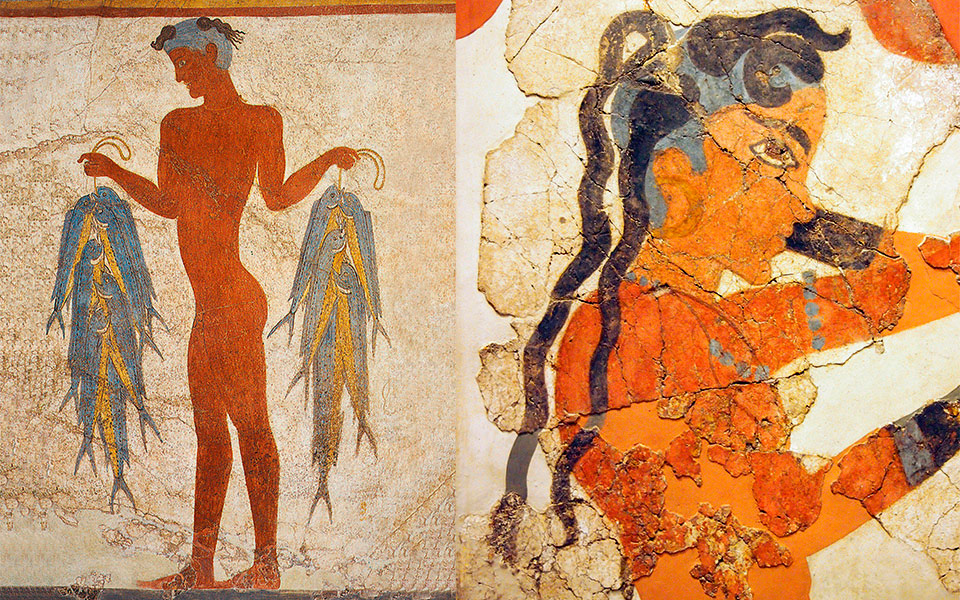A brand new exhibition displaying the spectacular frescoes of the Late Bronze Age Aegean town of Akrotiri on Thera (Santorini), buried in ash following a volcanic eruption some 3,600 years ago, has been inaugurated by the Greek Ministry of Culture and Sports.
The exhibition “Thera Murals – The Treasure of the Prehistoric Aegean” at the Museum of Prehistoric Thera showcases for the first time a large number of previously unseen frescoes from the prehistoric town, stored in the warehouses of the museum, alongside murals that were kept at the National Archaeological Museum in Athens.
Culture Minister, Lina Mendoni, said in her opening speech: “Until today, very few frescoes could be seen by the general public, as the vast majority have never been exhibited. The most important samples were exhibited until 1999 at the National Archaeological Museum in Athens.”
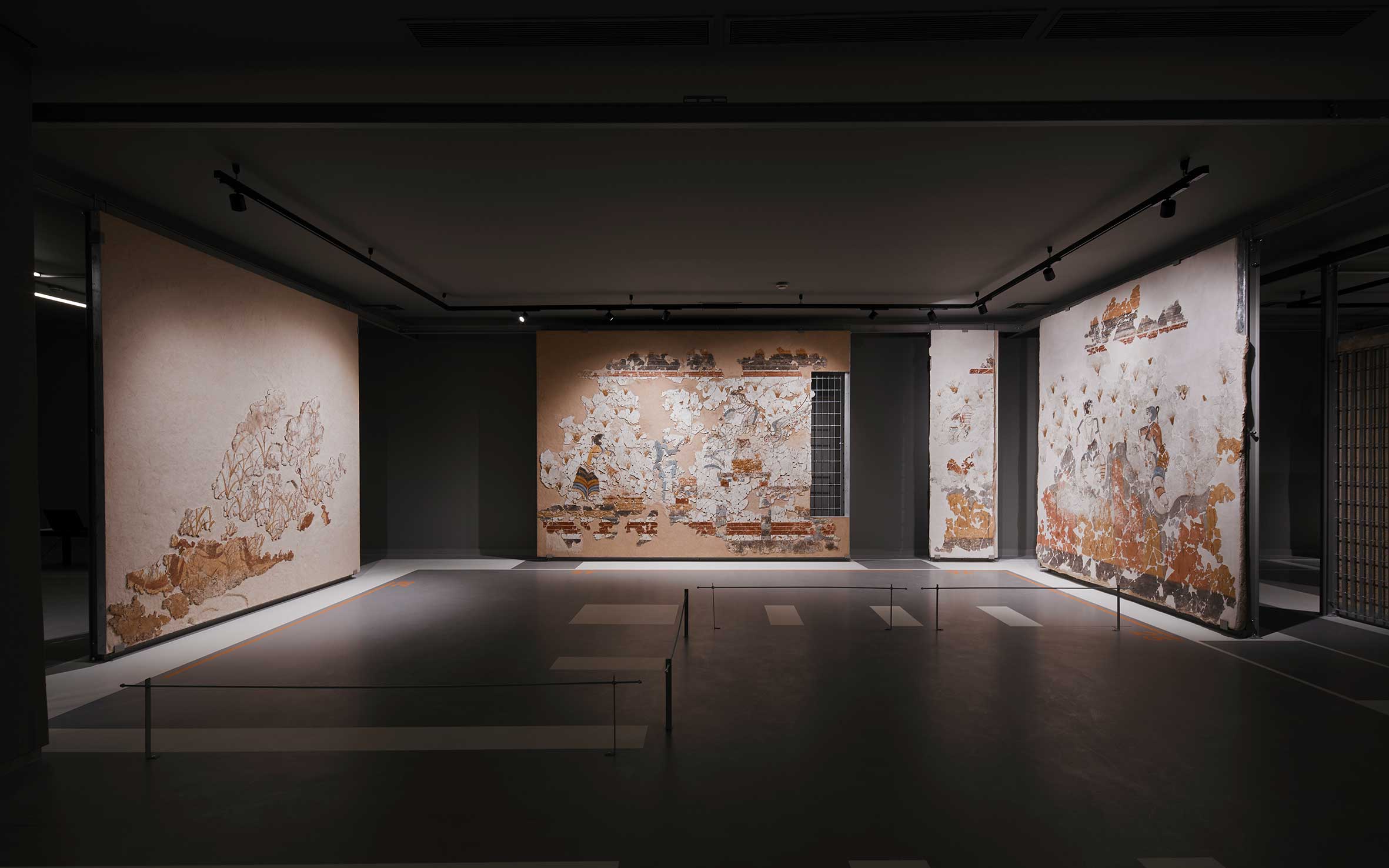
© Hellenic Ministry of Culture and Sports
The comprehensive exhibition is also the first time that all the frescoes, since their discovery, have been reunited in the same space, their place of origin, and presented according to their location in the prehistoric settlement – not as individual works of art but as complete compositions (murals), as they were originally intended.
Among the richly detailed and colourful exhibits on display include a fisherman holding up his catch, a pair of young boys (or girls?) boxing, elegantly dressed women gathering saffron, and a flotilla of ships arriving at a port. More than 58 frescoes have been recovered and conserved since archaeological excavations at Akrotiri began in 1967, as well as thousands of fragments.
Akrotiri was devastated by a huge volcanic eruption on the island around 1600 BC, sealing the town in meters-thick layers of pumice and ash, earning it the sobriquet the “Pompeii of the Aegean.” The cataclysmic event, known as the “Minoan eruption,” was one of the largest volcanic eruptions in the earth’s history. It not only entombed Akrotiri in ash but also destroyed towns and settlements on nearby islands, including Crete, with resulting earthquakes and tsunamis.
Mendoni commented: “The cause of Akrotiri’s destruction turned out to be at the same time a cause of rescue and excellent preservation.”
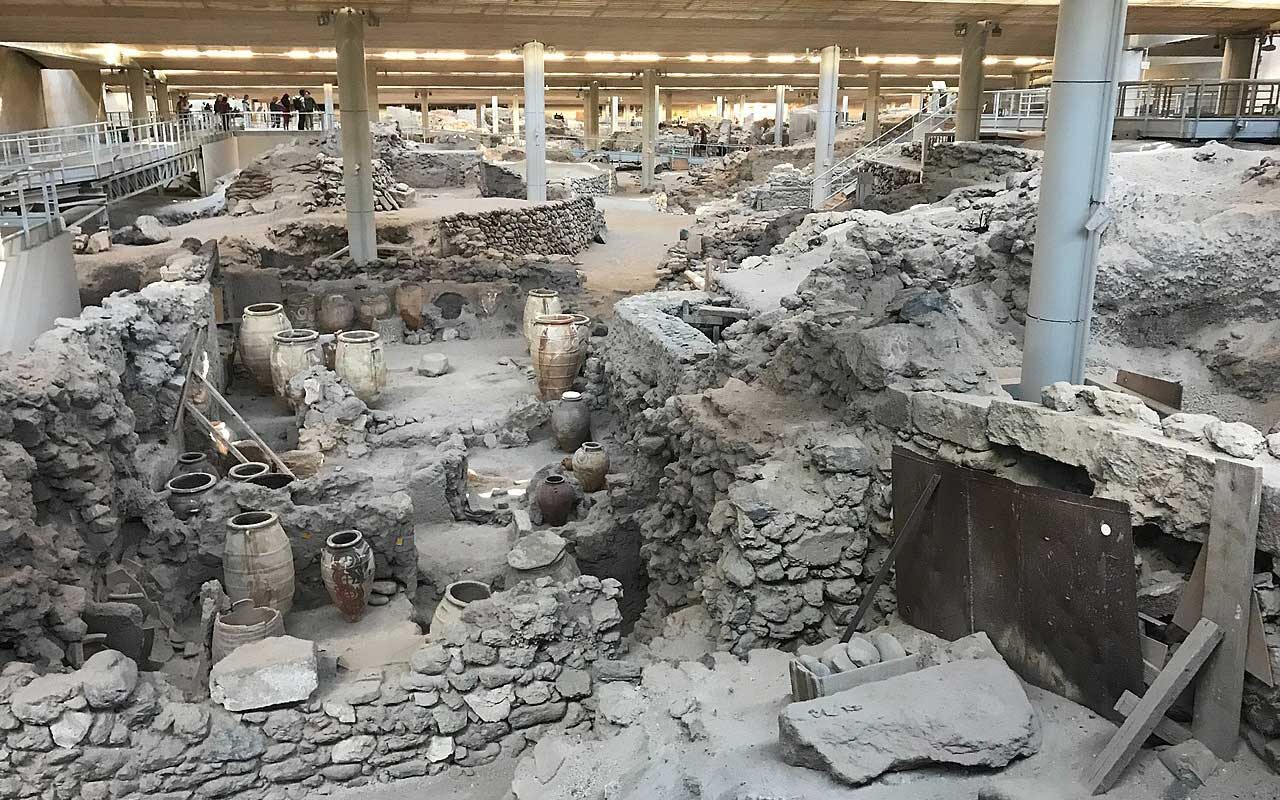
© Vangelis Zavos
Pompeii of the Aegean
Rediscovered in 1967 by Greek archaeologist Spyridon Marinatos, excavations at the Late Bronze Age town have so far revealed around 10,000 square meters (one hectare) of ruins, including multi-storied buildings, streets, and a complex system of pipes, drains and wells. The total area of the site is estimated to be around 200,000 square meters (20 hectares). As such, Christos Doumas, emeritus professor of prehistoric archaeology and director of the excavations since 1974, believes there are still many centuries of work to done.
Some 35 buildings now stand beneath a modern protective roof and accessible to the general public, but only four have been fully excavated. Among the remarkable finds include tens of thousands of ceramic vessels and other artifacts of precious metals, stone and ivory, as well as wooden furniture, textiles and basketry.
“Excavations have uncovered extensive remains of an extremely well-organised urban environment. They reveal the various amenities and richly constructed, equipped and decorated buildings, as well as a wealth of artifacts pertaining to aspects of everyday life; evidence of a vibrant and impressively advanced society,” Mendoni continued.
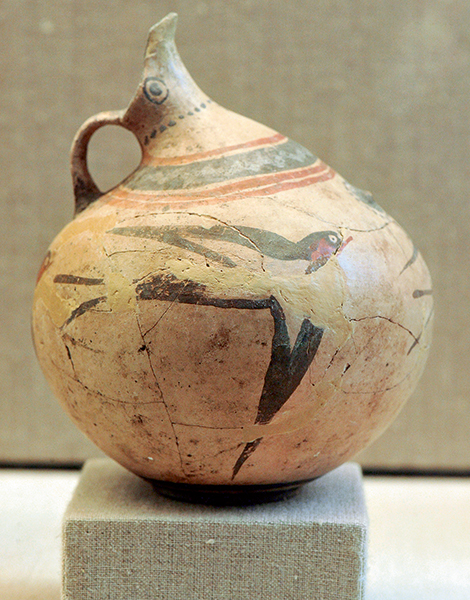
© Vangelis Zavos
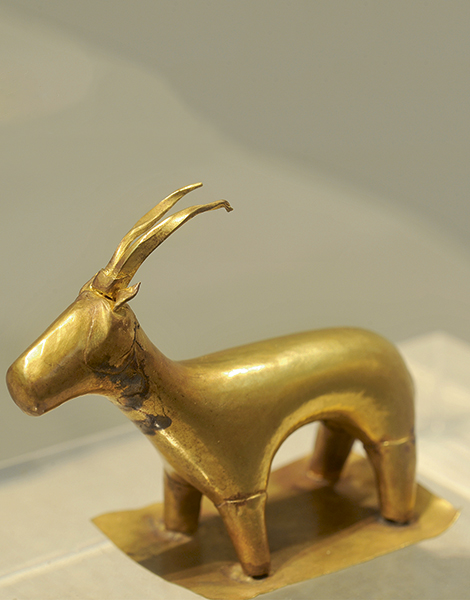
© Vangelis Zavos
Akrotiri’ inhabitants enjoyed close cultural contacts with nearby Minoan Crete, and, from the many imported objects found at the site, trading links with mainland Greece, Cyprus, the northern Levant (Syria) and Egypt.
Archaeologists still do not know the fate of the residents of the doomed town. Unlike Pompeii in southern Italy, no human remains have been found in the vicinity; they simply disappeared. According to Doumas, the inhabitants may have fled westward to avoid the smoke, ash and poisonous gases from the eruption. Further excavations may reveal more clues.
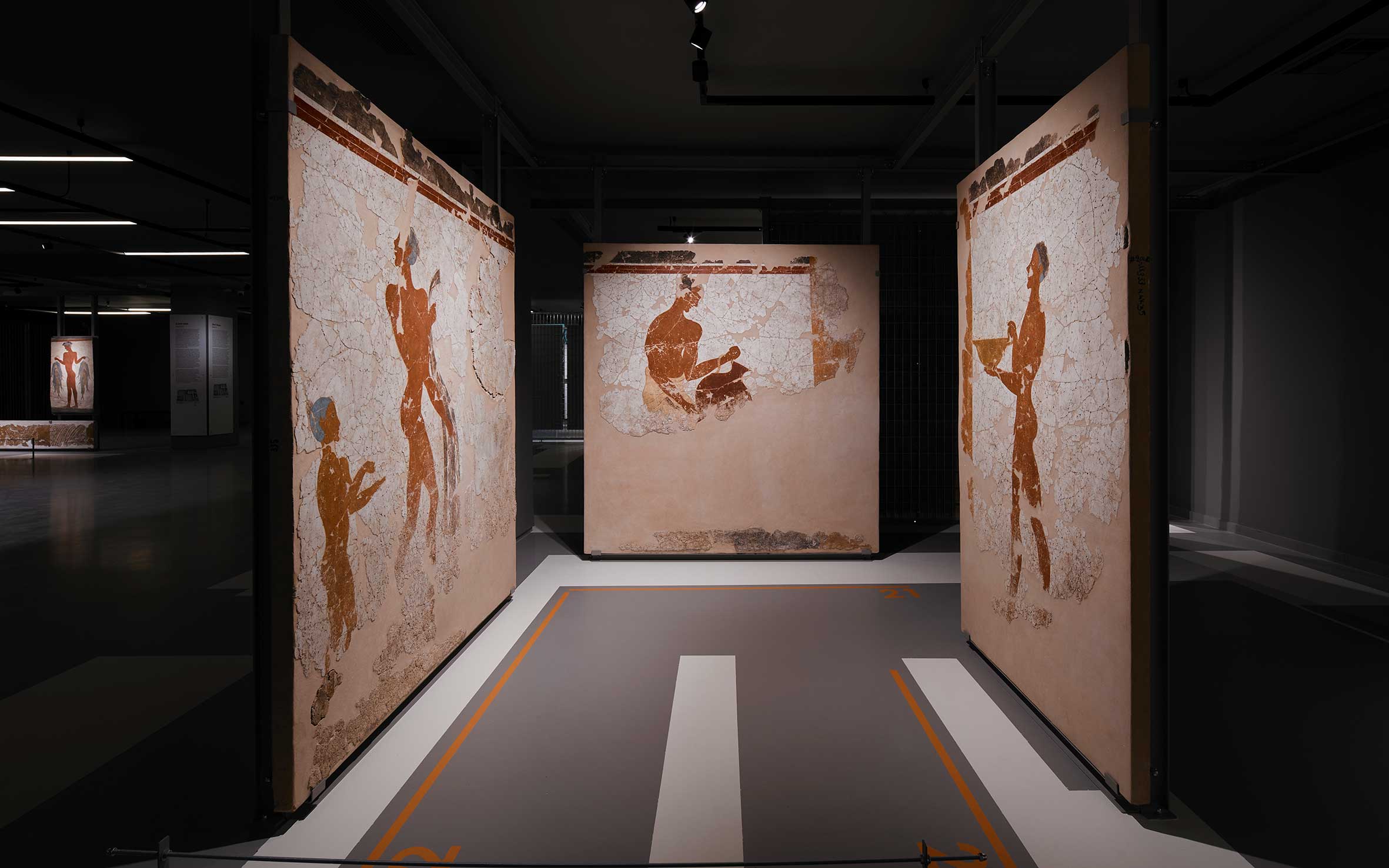
© Hellenic Ministry of Culture and Sports
Treasures of Late Bronze Age Cycladic Life
The elaborate murals adorned public buildings in the town as well as private residencies, including the “West House,” the site of the famous flotilla of ships. They depict the islanders and their everyday activities in minute detail, and provide precious detail about Bronze Age Cycladic culture, customs and beliefs.
A number of individual frescoes have been on display at the National Archaeological Museum in Athens since their discovery, exhibited as individual works of art and enjoyed by countless visitors, but the earthquake that struck Greek capital in 1999 caused considerable damage to the Minoan gallery where they were on display. It was decided by the Central Archaeological Council at the time to place the majority in long-term storage, with the aim of relocating them to a permanent exhibition in their place of origin on Santorini.
22 years following that decision, the Ministry of Culture and Sports, with the support of the relevant authorities, has achieved its goal.
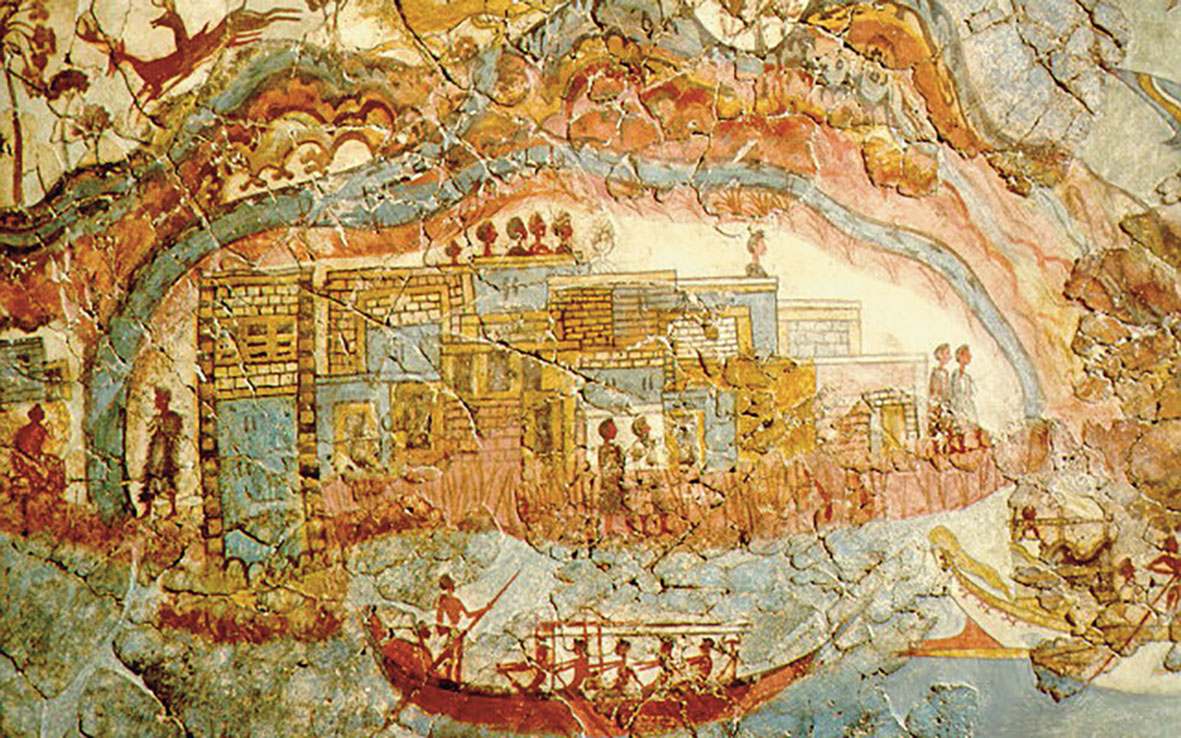
The Culture Minister said in her greeting: “Today is a big day, not only for Santorini and Greece but for the whole world. The Ministry of Culture and Sports today offers Santorini what rightfully belongs to it.”
The inauguration of this important exhibition at the Museum of Prehistoric Thera is of global interest, both scientific and cultural, and visitors will gain a better understanding of the remarkable murals in their true context.

